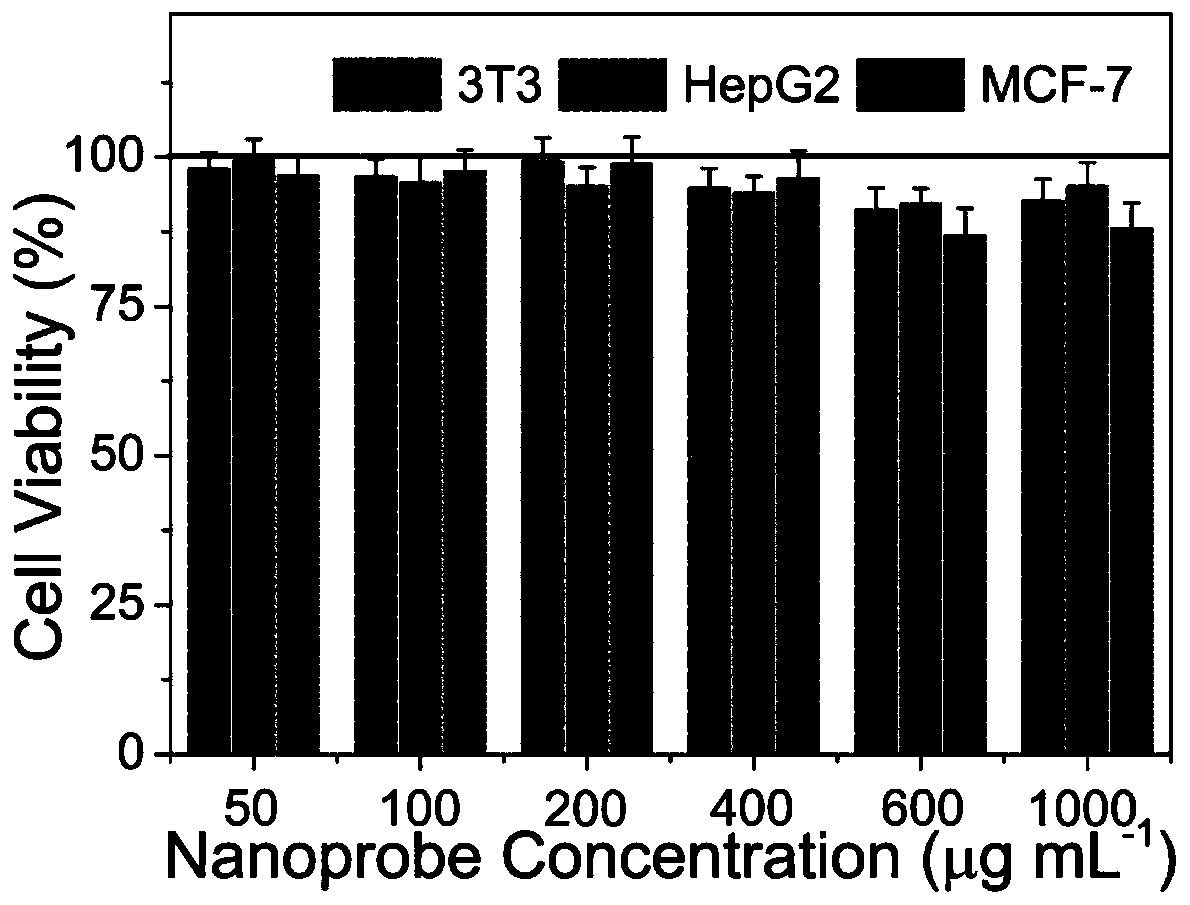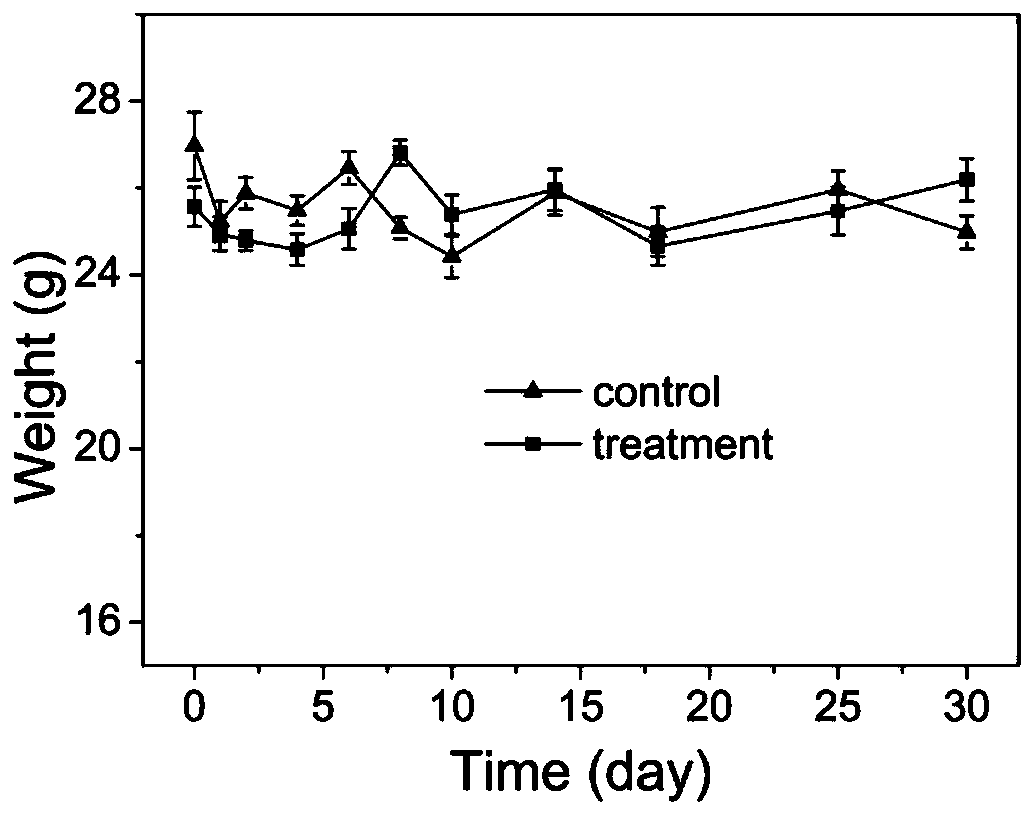Composite fluorescent nanoprobe preparation method and in vivo application thereof
A nano-probe and composite fluorescence technology, applied in the research field of fluorescent nano-probes, can solve problems such as qualitative and quantitative analysis, and achieve excellent selective recognition of target toxins, good low toxicity, stable structure and low toxicity Effect
- Summary
- Abstract
- Description
- Claims
- Application Information
AI Technical Summary
Problems solved by technology
Method used
Image
Examples
Embodiment 1
[0036] Preparation method and in vivo application of a composite fluorescent nanoprobe
[0037] (1) A long afterglow-copper sulfide composite nano-fluorescent probe that can specifically recognize aflatoxin was prepared by DNA hybridization reaction.
[0038] Preparation of long afterglow nanomaterials: Accurately weigh 1.4874g of Zn(NO 3 ) 2 ·6H 2 O solid was put into a 50mL round bottom flask, and 10mL Ga(NO 3 ) 3 solution (0.6M), stirring, until Zn(NO 3 ) 2 After fully dissolved, add 300 μL Cr(NO 3 ) 3 solution (0.1M), 1500μL Yb(NO 3 ) 3 solution (0.1M), 150μL Er(NO 3 ) 3 Solution (0.1M) and 10mL ammonium germanate solution (0.1M) were mixed and stirred, and the pH was adjusted to 7.5 with tert-butylamine for co-precipitation, 2mL oleic acid and 15mL toluene were added, and the mixture was uniformly mixed by ultrasonic treatment. Continue magnetic stirring for 2h, and ultrasonic treatment After 30 minutes to make it mix well, the formed white emulsion was placed...
Embodiment 2
[0045] A method for preparing a composite fluorescent nanoprobe and its in vivo application, the steps and methods are basically the same as in Example 1, the difference is that the biotoxin is Aspergillus versicolor, and the corresponding aptamer is an adaptation of Aspergillus versicolor Body sequence, the mice used for biological imaging are mice poisoned by Aspergillus versicolor.
Embodiment 3
[0047] A method for preparing a composite fluorescent nanoprobe and its application in vivo, the steps and methods are basically the same as in Example 1, the difference is that the biotoxin is ochratoxin, and the corresponding aptamer is the aptamer sequence of ochratoxin , the mice used for bioimaging were ochratoxin-poisoned mice.
PUM
| Property | Measurement | Unit |
|---|---|---|
| particle diameter | aaaaa | aaaaa |
| size | aaaaa | aaaaa |
Abstract
Description
Claims
Application Information
 Login to View More
Login to View More - R&D Engineer
- R&D Manager
- IP Professional
- Industry Leading Data Capabilities
- Powerful AI technology
- Patent DNA Extraction
Browse by: Latest US Patents, China's latest patents, Technical Efficacy Thesaurus, Application Domain, Technology Topic, Popular Technical Reports.
© 2024 PatSnap. All rights reserved.Legal|Privacy policy|Modern Slavery Act Transparency Statement|Sitemap|About US| Contact US: help@patsnap.com










